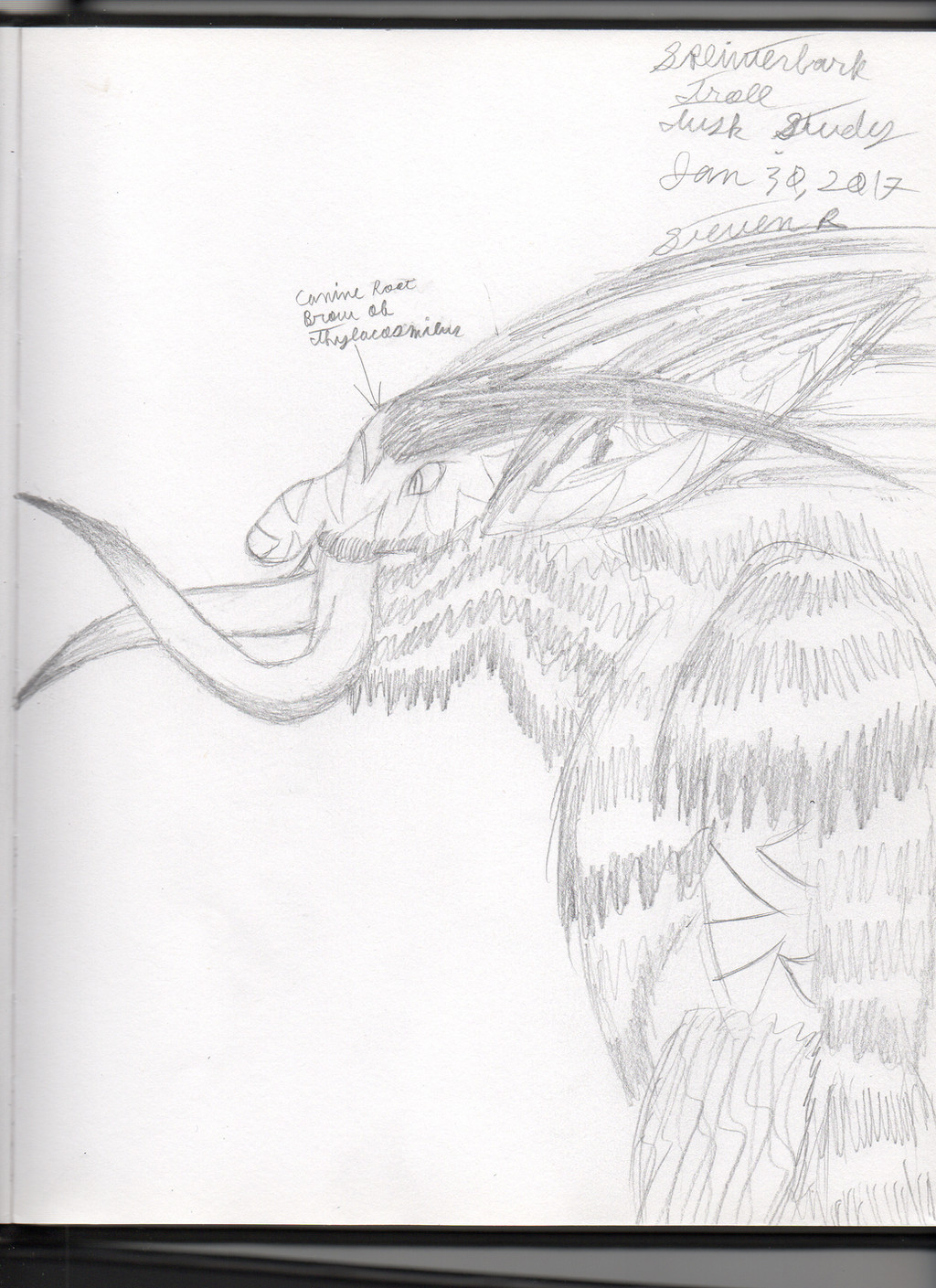HOME | DD
 Ruschman — Splinterbark Troll Tusk Study
Ruschman — Splinterbark Troll Tusk Study

#forest #megafauna #prehistoric #thylacosmilus #troll #trolls #wow #foresttroll #zulaman #prehistoricmammals #sparassodont #sparassodonts #foresttrolls #splinterbark #splinterbarktroll #splinterbarktrolls #splinterbarks #wowworldofwarcraft
Published: 2017-01-31 02:07:29 +0000 UTC; Views: 771; Favourites: 3; Downloads: 0
Redirect to original
Description
This portrait shows a profile view on how I understand tusk growth. Forgive me for the horizontal line on the portrait.I've always wondered how trolls with skinny faces would support such large tusks with seemingly-shallow roots, which was why I made the skulls on the Splinterbark Trolls broader and deeper. My idea behind this portrait lays in my personal expertise in taxidermy, where a skull needs to have enough strong bone to support tusk growth. If in real-life, someone were to hit a troll's tusk, the tusk would break off from the socket because the socket would be too small to support the tusk--all it takes is leverage, and the tusk will pop out, leaving behind a damaged bone socket holding the tooth in place, open to infection. As impressive the tusks on WoW's trolls may seem, I just feel that they are comparable to weeds--long things with a shallow root system that's just there. That's why I find it difficult to try and draw a troll skull. sporting such teeth. It's not the matter of not being able to draw the bone itself--it's the matter of "Where do I put the tusks exactly?"
In this case, the upper canines (which are the tusks) have a root system referenced from Thylacosmilus atrox, which was a cat-like, sabre-toothed metatherian, native to and extinct in South America. It was a sparassodont, a relative of the marsupials.
Regarding the overall portrait, the message isn't about who's right and who's wrong. I find it fascinating that WoW's trolls would have an additional pair of "canines" protruding from their cheeks, something that we do not see in any other mammal species in real-life. I only drew this to try and understand mammalian evolution in my theory, because science. I love the idea of something having gigantic tusks--but I thought there should be some kind of root system reinforcing the said size, akin to the elephant and thylacosmilus. I just couldn't picture tusks literally protruding out from the cheeks, because those are where the jaw muscles are. The tusks and muscles will interfere with each other and I didn't like the idea, which was why I drew my male trolls like this.
As for the giant tusks themselves, the troll sporting them would either have to have tall spinous processes in the Thoracic region to support huge neck and shoulder muscles, or make the teeth themselves lightweight, so they feel proportionally as light as rattan or wicker--which is lighter than wood. Wood, in contrast, would feel heavy, and we are talking giant tusks. For a troll to have to put up with the weight of one tooth just feels wrong on many levels, because the troll has to move his head around without having to feel his teeth move around and shifting their weight inside their sockets. It's exactly like holding a wooden broom handle by the end and waving it around and trying to control its inertia in a quick period of time, which hurts the hand quite a bit. Also, the idea of having "higher spinous processes" wouldn't be agreeable for the troll, as he has to be able to sit down comfortably without bumping his back up against a wall and risking a fracture if not paralysis.
Just saying.
- www.google.com/search?q=thylac…
- en.wikipedia.org/wiki/Thylacos…

























